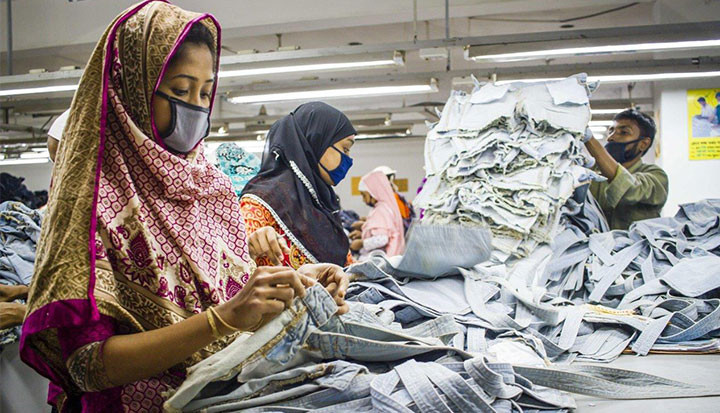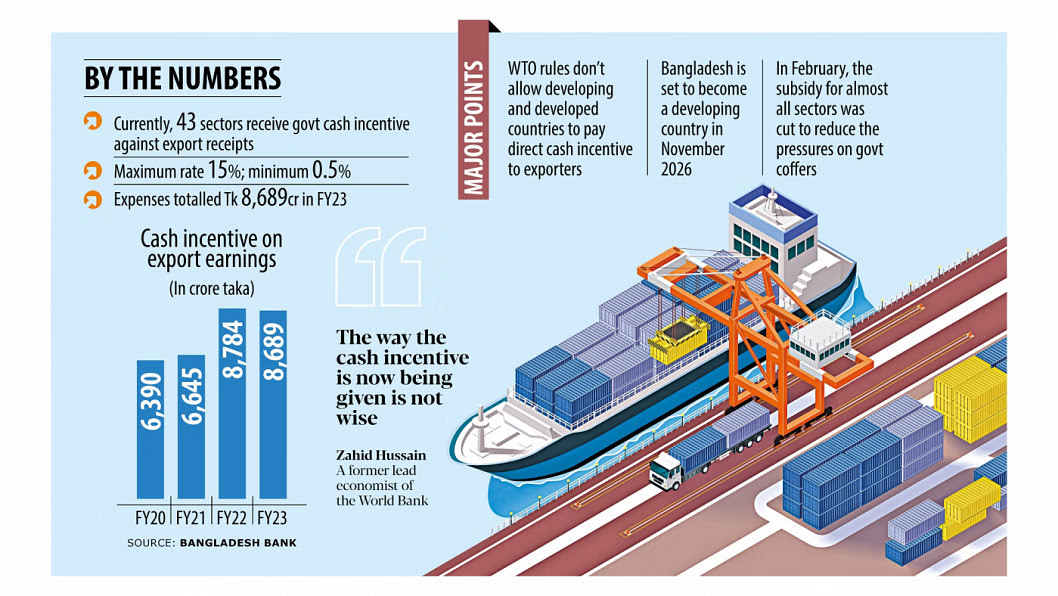The inflow of work orders from international clothing retailers and brands to Bangladesh’s apparel industry has been slowing down for the last few months. The worrying trend is impacting the country’s biggest foreign currency earning sector, which will ultimately extend the overseas exchange crisis.

Figure 1: The orders for the April-June season declined by 20 percent to 40 percent because of higher inflation in the Western economies stemming from the ongoing Russia-Ukraine war.
According to a report published in The Daily Star, the orders for the April-June season declined by 20 percent to 40 percent because of higher inflation in the Western economies stemming from the ongoing Russia-Ukraine war.
In my last article I mentioned that on 6th July, 23 one of the denim manufacturers of Bangladesh has shut down their factory which is really alarming for the industry and the economy of the country as well.
Also Read: Why Bangladesh apparel industry facing sudden order crisis
The major issues behind the unexpected market situation were discussed in the article. In today’s article, we will try to highlight some ways to sustain the current order crisis.
Need creative marketing policy
Every factory has a marketing department, but it includes the word ‘merchandising’ with it which is a problem. A person, not a superman who can handle the huge pressure of merchandising, market research, customer segmentation, branding, product development, quotation making, market metrics, fashion trends, price updating, samples development, thinking behind the market, smooth communication to meet the buyer initial requirement, CAP making and failure analysis, etc.
We should separate the marketing and merchandising department first and set separate KPIs for each. Marketing is the heart of the company and selling is the blood flow, we’ve to understand the concept. A marketer always doing R&D to understand the present, past and future market situation based on data analysis. A marketer do trend analysis, set strategy, present product, develop new product and brand the company to catch new markets.

Figure 2: Marketing is the heart of the company and selling is the blood flow, we’ve to understand the concept.
We are living in 2023 and our maximum top managements are living in 1980 (actually their thinking shows it). The all-out factory didn’t ensure a separate budget for marketing tools and means and branding. The marketing tools and means are the soul of marketing, without that, our marketers going here and there and using LinkedIn to catch the nonproductive buyers.
We don’t mean that, we will use only LinkedIn or other social media, rather we use it to collect data on who is the right person for my targeted company or brand. At the same time, we’ve to use some other tools to approach them directly, which is expensive, should be considered by our management.
Come out from lack of product diversifications
The lack of product diversification in our garment industry refers to a situation where there is a limited range of product offerings within a particular brand or company. That means our factory mostly offers or focuses on producing and promoting a narrow range of products, without exploring a wider variety of options. For example, if you are searching workwear, fake down jacket, seamless factory, uniform, functional product etc. that will lead to sweating, after that you may get it or not get it too.
The present situation is one of the results of lack of product diversification. There are some other consequences. Firstly, it limits the brand’s ability to cater to different customer preferences and tastes. Consumers have diverse needs and preferences when it comes to fashion, and by offering a limited range of products, a brand may fail to capture the interest of a larger customer base.
Moreover, relying heavily on a narrow product range makes a brand vulnerable to changes in market trends. Fashion trends are constantly evolving, and consumers are always seeking new styles and designs. If a brand fails to adapt and diversify its product offerings, it runs the risk of becoming outdated and losing relevance in the market.

Figure 3: A lack of product diversification can hinder a brand’s ability to expand into new markets.
Additionally, a lack of product diversification can hinder a brand’s ability to expand into new markets. Different regions and demographics may have unique fashion preferences and demands. By offering a more varied range of products, a brand can better accommodate to these diverse markets and increase its chances of success.
We’ve to do diversify our product basket. A woven factory must have the ability to do the critical uniform, workwear and a jacket factory must have to do fake down and real fare jacket. Also, a knitting factory must have seamless production capabilities.
Need to change fixed mindset
A fixed mindset is a belief in which individuals perceive their abilities, intelligence, and talents as fixed traits that cannot be significantly changed or developed. In our factory, people with a fixed mindset tend to believe that their skills and qualities are inherent and unchangeable, leading them to avoid challenges, feel threatened by failure, and view effort as fruitless. For example, when they see critical styles, they directly deny it. We’ve to solve this problem through to training and skill development programs. Different training and skill development should be a part of KPI.

Figure 4: The impact of a fixed mindset can be significant and hinder company growth and development in various ways.
The impact of a fixed mindset can be significant and hinder company growth and development in various ways. Here are some key impacts like loss the potential order, failure to order execution, quality fault, disability to crisis management, etc. We have to open up our minds to do marketing in new ways to get new orders.
Cope with new payment terms
Recently buyers have asked any unusual payment terms like deferred 30, 60, 90 days, BL 30, 60 days, BL at sight, TT 30%, but we are not used to doing these types of payment terms mostly. Some of companies are doing this, but that is only for some specific buyers who are working for a long time and they want to reduce the commercial cost mutually. In this case, the factory doesn’t feel any risk. But for a first order when a buyer asks these types of payment benefit that create confusion a lot. One of the solutions of this problem will be the credit report check.

Figure 5: Checking the credit report of a company is important as it provides valuable information about the financial health and creditworthiness of that company.
Checking the credit report of a company is important as it provides valuable information about the financial health and creditworthiness of that company. This practice is particularly beneficial for companies in the garment industry and can have several advantages for other companies within the industry. Here are some key benefits like risk assessment, minimizing payment delays and default, strengthening supplier relationships, negotiating favorable terms, and mitigating financial risks.
Customized line set up
Customized line setup is a timely demand in our industry. Maxima factory wasn’t able to make a small number of orders, but it has a huge demand in the international market. In this case, you will get an advantage over other competitors. If we can able to set up customized lines for the small number of orders (size by side) that will create a game-changing phenomenon.
The small garments order execution ability means to the capacity and capability of a garment manufacturer or supplier to effectively handle and fulfill small-scale orders. It is an assessment of their readiness and proficiency in managing the production, logistics, and delivery aspects of small orders placed by buyers or clients.
The ability to execute small garment orders efficiently is important for several reasons like flexibility, payment in advance, cost-effectiveness, easy quality control, less compliance requirement, and big order opportunities with good price.
Small garments order execution ability enables manufacturers to cater to a wider range of customers, respond quickly to market demands, and maintain strong relationships with buyers who frequently place small orders. By excelling in this area, garment manufacturers can enhance their competitiveness and reputation within the industry.
















